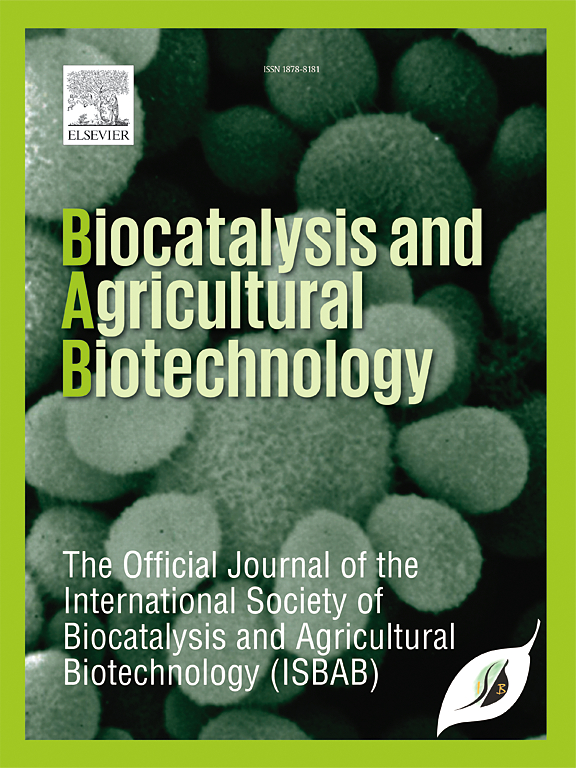Efficient rice straw saccharification by enzyme extract from Pseudolagarobasidium acaciicola TDW-48 and recycling its solid residue as a green and novel support for laccase immobilization
IF 3.4
Q2 BIOTECHNOLOGY & APPLIED MICROBIOLOGY
引用次数: 0
Abstract
This study aimed to provide a novel and feasible approach for rice straw bioconversion regarding the combination of enzymatic saccharification and recycling of its solid residue for enzyme immobilization. Firstly, rice straw was saccharified by Pseudolagarobasidium acaciicola TDW-48's enzyme extract and then optimized to improve its performance. Next, the enzymatic-degraded rice straw (a solid residue from saccharification) was recycled as an enzyme support for laccase immobilization. The result indicates that the rice straw saccharification by P. acaciicola TDW-48's enzyme extract was a practical process for biofuel and other value-added product production. It reached 13.4 g/L of reducing sugar concentration under optimum conditions: 12 h of incubation time, 43.22 °C of temperature, pH of 4.5 and substrate loading of 0.48 g. In the next regard, enzymatic-degraded rice straw under adsorption-crosslinking mode was a promising novel support for laccase immobilization. This process achieved 1.24 U/gsupport of immobilized laccase activity and 88.3% in immobilization yield. The immobilized laccase could maintain 96.71% activity after 4 cycles and 53% activity after 10 cycles with ABTS substrate, and its stability was enhanced compared with free form. In addition, the immobilized laccase could decolorize 0.14 mg of bromophenol blue after 3 h and retain 53% relative efficiency after 6 cycles under biocatalyst bag form. This study encouraged the recycling of solid residue from rice straw saccharification, improving rice straw bioconversion. Moreover, it provided green, novel and economic support for enzyme immobilization with high applicability and simplicity.

求助全文
约1分钟内获得全文
求助全文
来源期刊

Biocatalysis and agricultural biotechnology
Agricultural and Biological Sciences-Agronomy and Crop Science
CiteScore
7.70
自引率
2.50%
发文量
308
审稿时长
48 days
期刊介绍:
Biocatalysis and Agricultural Biotechnology is the official journal of the International Society of Biocatalysis and Agricultural Biotechnology (ISBAB). The journal publishes high quality articles especially in the science and technology of biocatalysis, bioprocesses, agricultural biotechnology, biomedical biotechnology, and, if appropriate, from other related areas of biotechnology. The journal will publish peer-reviewed basic and applied research papers, authoritative reviews, and feature articles. The scope of the journal encompasses the research, industrial, and commercial aspects of biotechnology, including the areas of: biocatalysis; bioprocesses; food and agriculture; genetic engineering; molecular biology; healthcare and pharmaceuticals; biofuels; genomics; nanotechnology; environment and biodiversity; and bioremediation.
 求助内容:
求助内容: 应助结果提醒方式:
应助结果提醒方式:


